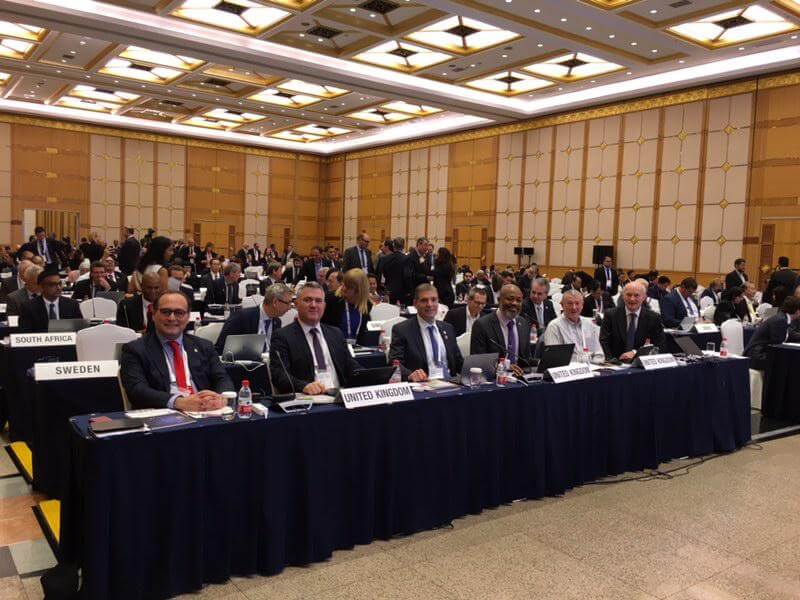13 July 2021
A UK sustainability innovation champions is behind an IEC* futures project mapping routes for a sustainable transport system dubbed ‘lean mobility’.
The thinking is backed by a new IEC (International Electrotechnical Commission) interactive website that challenges people to explore how populations can move better, with consideration of time, energy and sustainability.
IEC is inviting web visitors to offer their views – and solutions – in a unique world-stage opinion and inspiration-gathering exercise.
The lean mobility website offers three possible scenarios to better understand how transport could better evolve alongside sustainability goals and travel needs.
British industrialist and government advisor to the Department for International Trade, Dr Maurizio Bragagni OBE**, led the project for the IEC Market Strategy Board (MSB).
Dr Bragagni, one of a small number of the world’s elite Institute of Directors’ Chartered Directors, said: “We developed this interactive portal to explore the complexities of mobility and generate a conversation around its status quo, future challenges and potential solutions.
“Using futures-mapping techniques, the web portal imagines different scenarios that can be used to engage users in forward-thinking through the problems and nudge the world towards a better future.”
Future Studies is a relatively new approach to understanding and managing what comes next. It uses statistics and the trends and impacts affecting them over time to provide insight for economic and societal changes. In short it forecasts incoming trends and economic climate-change informed by the patterns recorded in historical data. Strategies can then be built to anticipate and resolve complex challenges.
The Lean Mobility Website presents three future scenarios based on detailed interviews with mobility experts around the world with data divided into Authority, People and Technology.
Dr Bragagni, who led his advanced cable technology company, Tratos, to win a Queen’s Award for Enterprise: Innovation, is well-placed to lead the work; his company works across the world’s infrastructure industries – including transport – to innovate for sustainability. He and his team are working with Spanish standards agency Aenor to develop the technology to measure – and so manage – individual companies’ own carbon footprints and has just signed up to partner stakeholders in The Liverpool Bay project to capture land-based CO2 and bury it safely below the seabed 18 miles offshore.
People
In the early 2020s car ownership – and congestion – grew rapidly. The Lean Mobility web portal suggests people’s movement should adapt to become more ‘swarm-like’ via regional travel and personal journeys becoming hyperconnected.
‘like swarms that occur in nature, they are routed in balance’
It offers that privacy and connectedness are a critical balance and we already have the power to orchestrate better balance if movement is negotiated by technology. It will, claims the site, have a profound impact on everyday journey decisions, but has the potential to ease traffic congestion saving 42,000,000,000 billion man-hours per year.
‘in rural areas cars are essential….but’
Authority
The site suggests that the use of private cars is banned in cities to meet emissions laws and allow for better urban travel for everyone, with mobility hubs acting as gateways to cities from which residents and visitors can choose the options that best fit their needs.
This approach, claims the site, has the potential to drastically reduce pollution (as well as congestion and accidents) if public policy decisions are driven by performance-based standards. The move would require governments working to shared goals to reduce reliance on fossil fuels and creating more sustainable choices.
Technology
‘Emissions are rationed across the planet’
Joint ownership of a shared problem isn’t a new solution, but it is the only one that will tackle the climate emergency.
The site acknowledges that it will restrict choice and mobility options which, for many, will feel like the world has started to close in – but, it claims – innovation will re-open the world.
Modes of transport will emerge as well as new companies behind them, with collective innovation to the fore. While organising transport becomes more locally focused, technology will work to expand horizons, says the portal.
Innovation will deliver new mobility solutions, offering environmentally friendly transport as well as enhanced personal experiences and social interactions using technologies such as artificial intelligence.
According to Daniel Barlow, part of the international team working on the project and Head of Innovation Policy at BSI, “With this project we are not trying to predict or forecast exactly what is going to happen. Rather, it is about considering different scenarios, how they may play out and then looking at our own strategy and ensuring that it is resilient.”
Starting a conversation
Each of the three scenarios concludes with questions requesting suggestions around the future for sustainable transport and thoughts on how the IEC can help tackle these scenarios.
The report is a new format for the IEC with a more engaging, immersive and ‘human’ dimension it hopes will appeal to those not traditionally involved in standardization.
Next steps
MSB members wanted to explore the topic beyond the narrow confines of transport, including challenges such as climate change and equity in a post-COVID environment.
Dr Bragagni noted: “If we do not begin to think radically about the challenges we face and how standards can help bring solutions, we risk becoming irrelevant. We need to show the world and our members that the IEC is contemplating the future and, through our standards, we can establish consensus for collective innovation and action.”
For further information denise@owlpr.co.uk
0780 118 2252
